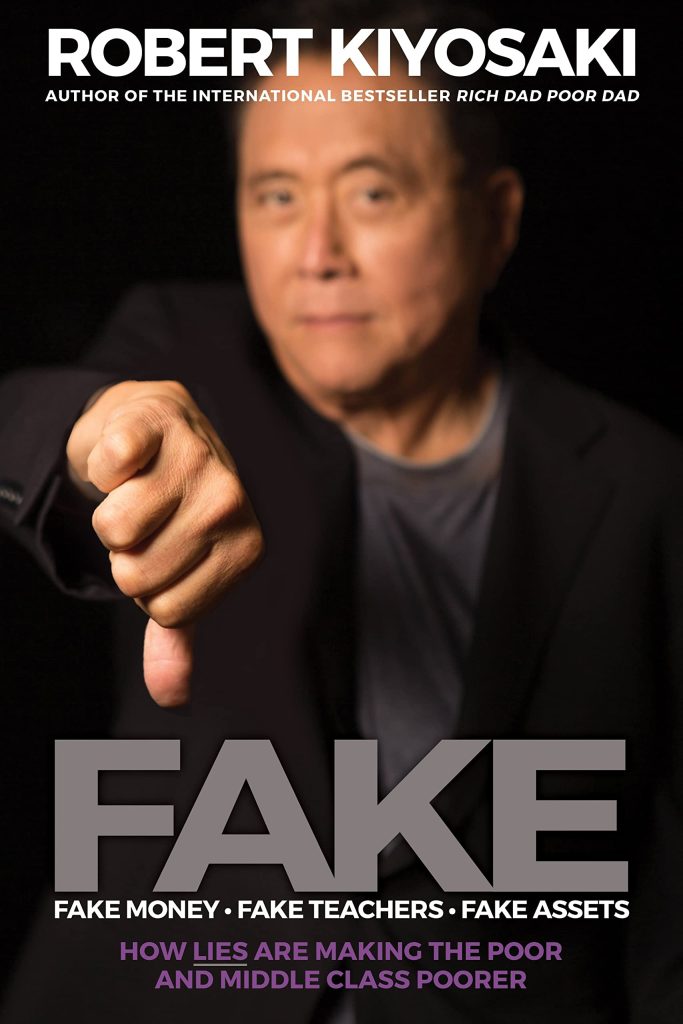“Most people don’t invest. They gamble—with little expertise, little research, and little control—hoping things will turn out well.”
-Kyle J Christensen
By Kyle J Christensen, Founder, Principles-Based Planner, Unique Advantage
Unique Advantage Monthly Client Email – February 2025
8-9 minute read
I believe a lot of people are putting money into “investments” without any clear idea of what they want the outcome to be, and how they would determine whether their investment strategy was a success or not. For some (or most), simply having their investment assets grow is how they would define success. For others, it might be reaching a certain level of growth in the value of the assets. For a few, they would define success by the amount of income their investment assets produce. I believe the latter definition is the most correct way to measure success when it comes to investing.

Many people focus on retirement as the goal for investing. Most people call it “saving for retirement.” It’s interesting, and not by chance, that the word that is used is “save”. They don’t use the words “invest for retirement.” They use the words, “save for retirement.” They use the word save because that’s what financial institutions have conditioned them to use as it relates to this type of “investing.” Saving and investing aren’t the same thing, are they? Do they have the same meaning? Saving means to remove from risk, to rescue from danger (see Websters Online Dictionary). Is that what people are doing when they put money into mutual funds or ETFs in their retirement accounts? No. They’re actually putting their money at risk, not protecting it from risk. So, what are they doing when they systematically and automatically put money into mutual funds and ETFs in the stock market (usually through their retirement accounts)?

All investments have risk of loss. So, why do financial institutions want us to call it “saving?” Maybe because saving sounds less risky. Maybe because saving sounds like the smart thing to do, something everyone should do. But this is clearly not saving, by the definition of the word. People that are putting money systematically and automatically (which means, without thinking) into retirement accounts are actually gambling (not saving or investing, based on the definitions of those words). Gambling means to play a game of chance, to bet on an uncertain outcome, for money. There’s no real element of control in gambling. In other words, when people gamble, they have little or no influence over the outcome. Most people also know almost nothing about where they are “investing” their money inside of their retirement plans. In fact, what’s most popular today are target-dated funds, which doesn’t tell the investor A THING about where the money is actually invested. So, you combine the elements of little to no expertise, little to no research and investigation, little to no control or influence, and a simple hope
that things will turn out well, and you have gambling.
Let’s go back to our question. How do people know whether their investment strategy is working or not? Again, if the definition of success (whether it works or not) is simply based on the account/assets growing in value, that’s a pretty loose definition. Almost anything could satisfy it. A savings account at Wells Fargo Bank (which is currently paying 1 hundredth of 1% per year) could do the job. The value of the money would grow but not by enough. So, then we need to refine our definition of success a little more. Maybe we want significant growth, “more than what a bank would pay us.”

Again, that’s a pretty loose definition for success. Almost anything outside of a bank account has the ability to grow by more than a bank account. Stocks, Bonds, Mutual Funds, and ETFs certainly have the capability of growing more than a bank account. But if we did that, how would we know it worked or not, and when would we know, especially inside of a retirement account (IRA, 401(k), etc)? The large majority of the financial planning industry has adopted Needs-Based Planning as their foundation for planning. Essentially, it’s a game of predicting future needs, predicting rates of return, and working backwards to calculate the amount of money a person needs to save to get to the destination (which they often refer to as a “retirement nest-egg”). To get there, they use complex planning software systems that supposedly take all things into account (they are “holistic”). However, they ALWAYS ignore many important aspects of planning, such as property and casualty insurance (Can a financial plan really be holistic if it doesn’t address the protection of autos and homes? No). Keep in mind that all other financial planners (outside of Unique Advantage) focus mainly, if not solely, on retirement as the objective. So, in their minds, the only thing that really matters is investments. Everything else, whether they want to admit it or not, is to be minimized in importance (and in allocation of funds).
The traditional financial planner imports the data that the client provides (again, heavily focused on income, assets, and retirement), and the complex planning software spits out “a financial plan” based on Needs Analysis. The type of question traditional financial planner will ask is, “How much of your income do you need to replace when you retire?” If the client can’t give a good answer for that, the industry has one. The industry encourages people to work to replace 70-80% of their pre-retirement income. The assumptions they make include: Kids growing up and moving out (becoming independent financially from the parents), mortgages being eliminated, downsizing vehicles (“You only need one car now that you both aren’t commuting to work anymore.”), “You’ll be in a lower tax bracket in retirement.” and Social Security will make up the difference. That’s a lot of assumptions that may or may not turn out to be true. But let’s just go with it for a minute.

To figure out the “nest egg” amount needed, the computer system uses something called Safe Withdrawal Rate. Essentially, the Safe Withdrawal Rate is the rate at which a person can supposedly withdraw money from their retirement nest-egg without a high probability of running out of money before dying. The complex planning software takes the desired retirement income amount and divides it by the Safe Withdrawal Rate. 4% is the Safe Withdrawal Rate that the planning industry has used for decades, regardless of the interest-rate environment and market situation. So, it’s really not a great thing to rely on. More recent research has shown the one-size-fits-all 4% Safe Withdrawal Rate to potentially be problematic.
Let’s look at an example. If a person is earning $150,000 per year right now, and that person wants to replace 80% of his pre-retirement income, the retirement nest-egg needs to be at least $3,000,000, based on the Safe Withdrawal Rate of 4%. If the Safe Withdrawal Rate is really just 2%, then the nest-egg needs to be at least $6,000,000. Easy right! Not really. In fact, most people will never see anything close to a million dollars in their retirement accounts, even right now when the market is at or near its all-time high.

The 401(k) is by far the most common investing vehicle for most Americans. It’s also the type of retirement plan that allows the highest contribution (outside of pensions). This year (2025), a person can contribute up to $23,500 (plus $7,500 if over 50 years of age). Roth and Traditional IRAs limit contributions to $7,000 max (plus $1,000 if over 50). 401(k)’s have been around for over five decades now. So, they aren’t new. We have plenty of experience and empirical evidence of their “success.” According to Nerd Wallet and the data from Vanguard, the average 401(k) balance for Americans 65 and older is $272,588 and the median balance is even more damning, $88,488. I don’t think most people would look at those results and say, “Wow, that’s been an incredible success for most people!” It clearly has not been. In fact, it might even be fair to say that it’s been an utter failure of an experiment. But the financial planning industry would have a hard time looking in the mirror and admitting such a thing. So, they don’t. They blame you for the results. “You didn’t save enough.” “You got scared when recessions happened and moved money out of high-risk options and into low-risk options after the market tanked.” “You didn’t diversify enough.”
Would you call it success, having $272,000 in your retirement account after an entire working career? Probably not. What if you had double the average? How about then? Would you call it a success? How much income could $544,000 generate in annual income in retirement? If we use the Safe Withdrawal Rate, it’s only $21,760/yr. If you take more than that, you run a higher risk of running out of money before the day you die. For a family of two, right now in the United States, you are considered to be in the poverty level if you make $20,440 or less in annual income.
No, what most people do when they “retire” is they either get another job, or they rely mostly (or entirely) on Social Security, and try not to spend the money in their retirement accounts. They even dislike it when they are forced to withdraw funds from their retirement accounts at age 73 (the age at which they must begin Required Minimum Distributions). Why? Because they are afraid to use the money they have in their retirement accounts, because it isn’t enough and they don’t have a means for replacing it if they do use it. This is exactly the position financial institutions want you to be in! It’s like pharmaceutical companies. They don’t want you to be healthy. They want you to be just healthy enough to work and earn money, and just sick enough to need their meds. Financial institutions don’t want you to be independent financially. They don’t want you to have the ability to replace your investment assets, because then you might use them.
Whether your investment strategy works or not should be based on the ability of your assets to replace all of your earned income (and more over time, because of inflation). That’s the correct measure for whether your investing strategy works or not. It’s not simply that your investments grow. It’s not having a certain amount of money (value of assets). It’s the income that your assets can produce. If it’s sufficient to replace all of your income and more, then you’ve succeeded.
Financial institutions and the traditional financial planners who peddle their wares and adopt their desired philosophy, can’t sell you assets that produce income. This is why Robert Kiyosaki calls what they sell, “fake assets” (ref Fake, by Robert Kiyosaki). They are fake assets because the money really only flows one direction, away from you. Real assets produce cash flow back to you (not “hopefully,” decades from now).

Why don’t most people invest in real assets if they are the only ones that lead to true financial freedom? There are a number of reasons. First, fake assets are easy and convenient. They don’t require much time and effort. They don’t require any real research or level of knowledge in order to participate. Does “easy” usually have the power to do anything great for us long-term? Second, fake assets (and the philosophy that uses them) are invented by and promoted by financial institutions. They control the narrative! In some cases (specifically where the advisor is securities licensed), they are even prevented from talking about anything else. They actually have “speech police” who tell them what they can say and what they can’t say. Scary. Third, fake assets are super popular, because they are easy and are promoted by all financial institutions (and most accountants, by the way – who also parade around as financial advisors and get paid for “assets under management”). People like following the crowd. They don’t like doing something different, although they all want different results from what the crowd is going to get. Sounds like insanity, right?
When you get on an airplane to go to a destination, you know you made it, because you arrive at the destination you intended. When it comes to investing, I would encourage you to really define what success means to you. Is it having growth, a certain amount of growth, or a certain amount of income? Otherwise, you might be investing in things that can never get you to where you want to be. Lastly, if you are doing something different than the crowd, good for you! The crowd, for the most part, will never become financially free. Don’t do what the crowd is doing when it comes to personal finances. They are underprepared for the negative things that can and do happen in life. They have far below what they need (and especially far below what they want) in retirement. Don’t follow their path. Be courageous and feel good about being different and sometimes alone. You really aren’t alone. It just may seem that way when you aren’t doing everything that the financial institutions want you to do. But that is the path to financial freedom. And I have faith that you can become financially free, if you are willing to put in the time and effort and you implement the principles that we have taught you.
Sincerely,
Kyle J. Christensen
P. S.
Check out past newsletters here!
Have you met with a financial planner yet? Click the link below to schedule your free session!
